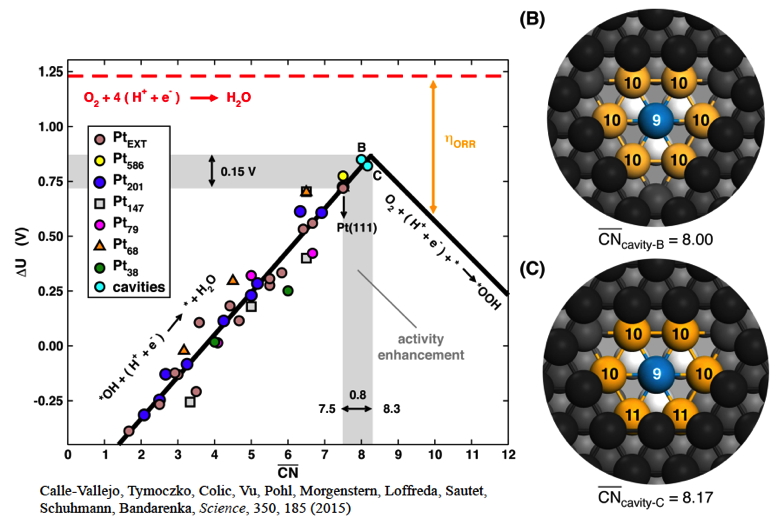
Our group pioneered the structure-based activity descriptors for heterogeneous catalysts (see publications below). The obtained fully predictable, structure-sensitive scaling relations are a major step towards the fast screening of metallic catalysts for a given reaction. The method is particularly powerful for describing the catalytic activity on nanoparticles. The proposed a new descriptor called “generalized coordination” scales linearly with adsorption energy for various site structures and also for different particle sizes and enables the design of the optimal structure for a catalyst active site. It was predicted by the model and confirmed by experiments that small cavities at the Pt(111) surface enable to increase the activity for oxygen reduction reaction by a factor 3.5. Catalyst optimization through particle size and condition-dependent morphology is the key target of this branch of research.